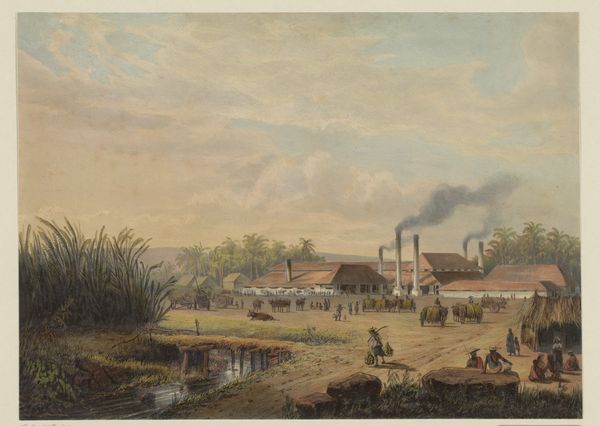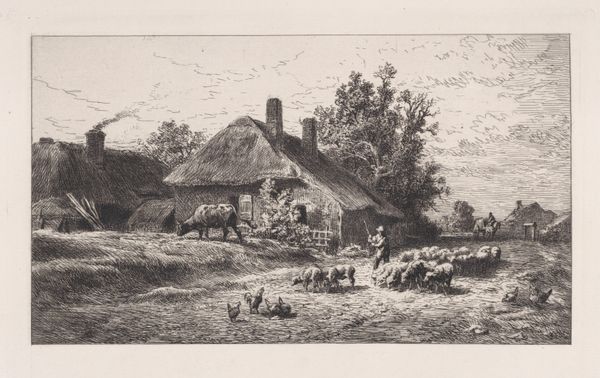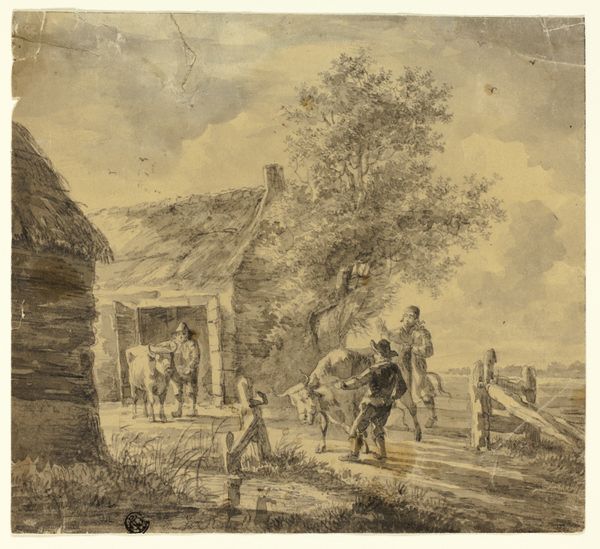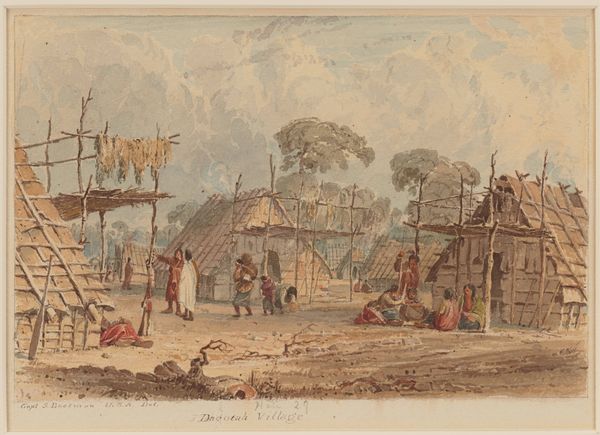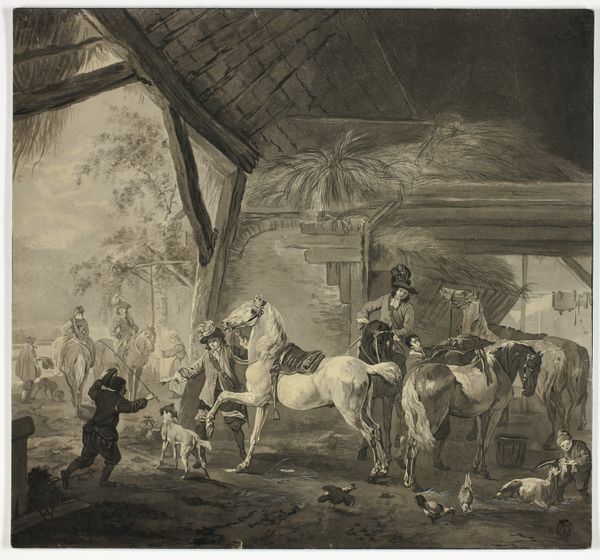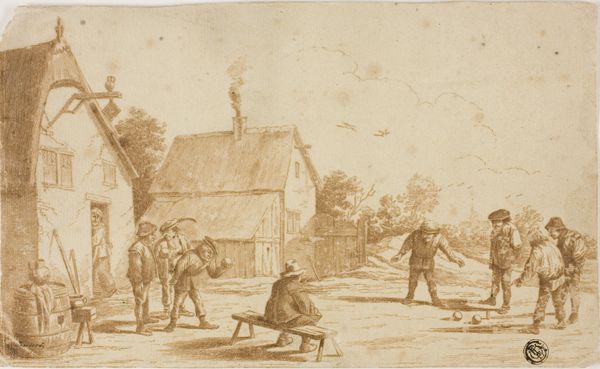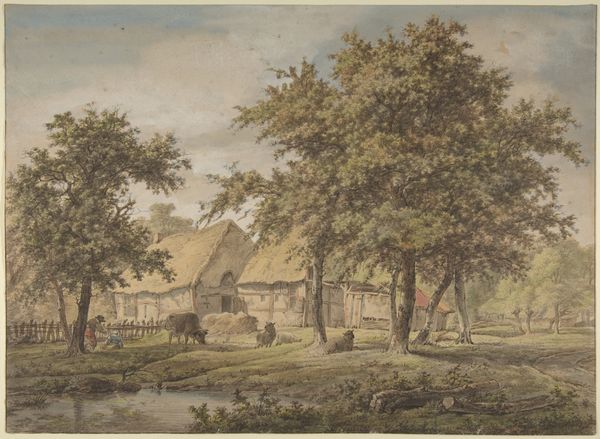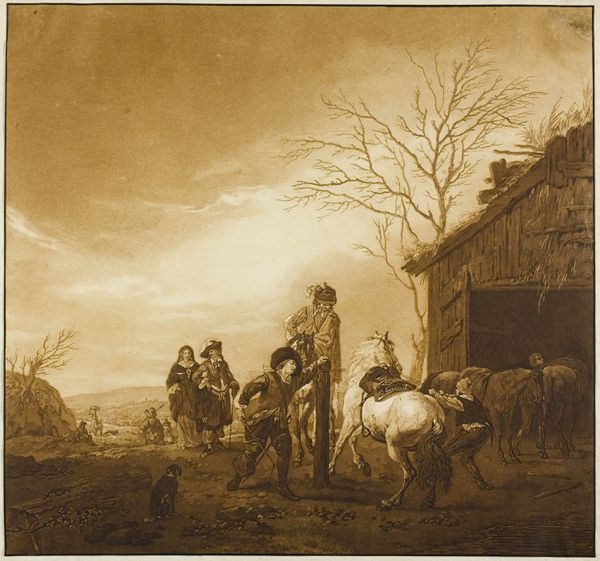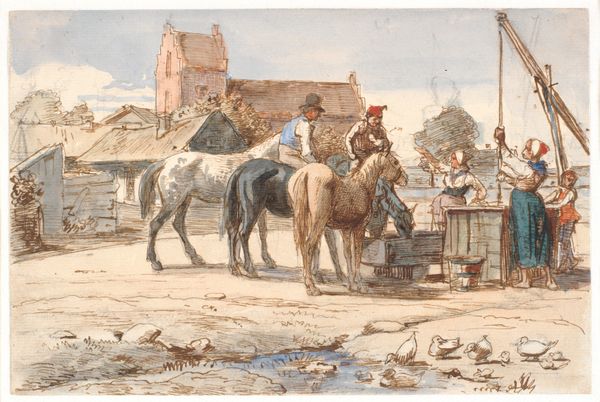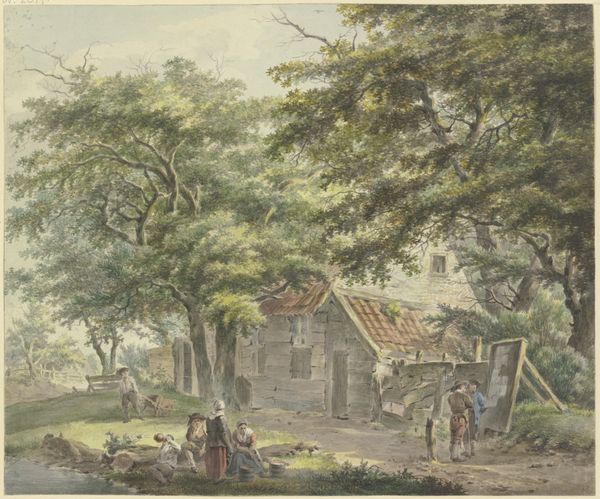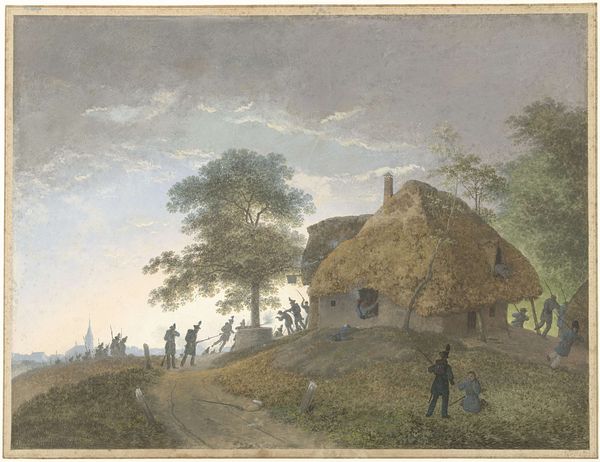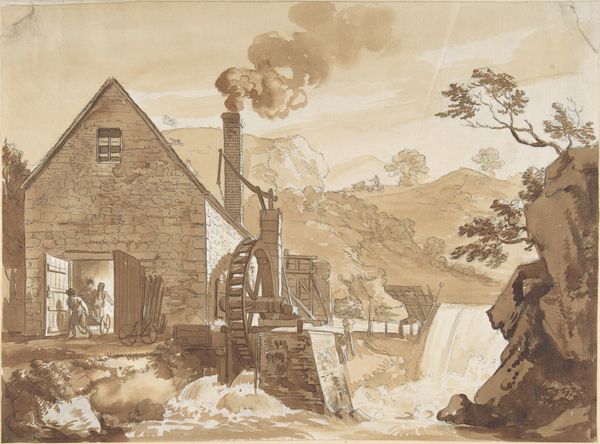
painting, watercolor
#
narrative-art
#
painting
#
landscape
#
oil painting
#
watercolor
#
genre-painting
#
watercolor
#
realism
Dimensions: height 338 mm, width 498 mm
Copyright: Rijks Museum: Open Domain
Editor: This is Charles Rochussen’s "The Blacksmith," created in 1876. It appears to be a watercolor painting. There's a real sense of quiet industry here, everything bathed in a hazy light. What do you see in this piece? Curator: Immediately, I see a portrait of industry and community. The blacksmith, the heart of this image, represents a linchpin of society. The figures gathered – the children, the woman at the door – speak to the blacksmith’s role within the village, more than just a tradesman. He’s central to the cultural and economic vitality of the village. Editor: So, you're saying it's more than just a snapshot of a profession? Curator: Exactly! Consider the symbolism of the forge itself – fire representing transformation and creation. The dark interior is suggestive of alchemy, the mysterious process of shaping raw material into something useful. And the smoke rising may symbolize aspirations, upward mobility and progress, a burgeoning industrial revolution. Even the colors used point to a very deliberate message, rooted in earthiness and dependability. Editor: It’s interesting to think about the connection to a broader cultural narrative like that, and to look beyond what my initial assessment suggested. Curator: The power of art resides in its symbols, in how they speak across generations. Looking at this image, consider the long, and continuing presence of these industries in the visual lexicon. Editor: I’ll definitely view genre paintings differently from now on. Curator: Indeed! Now, what other overlooked narratives might await our attention?
Comments
No comments
Be the first to comment and join the conversation on the ultimate creative platform.
